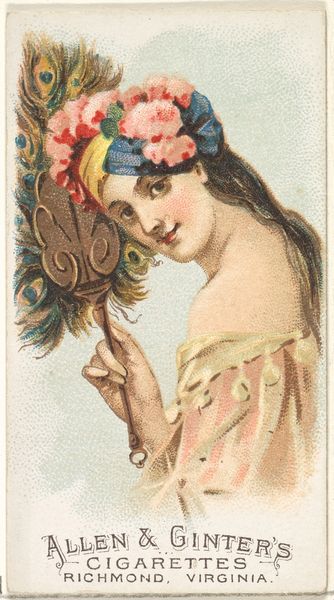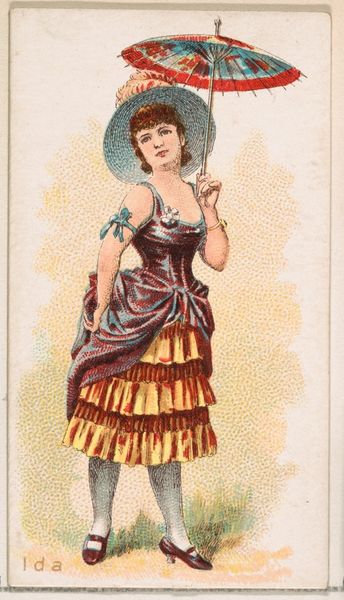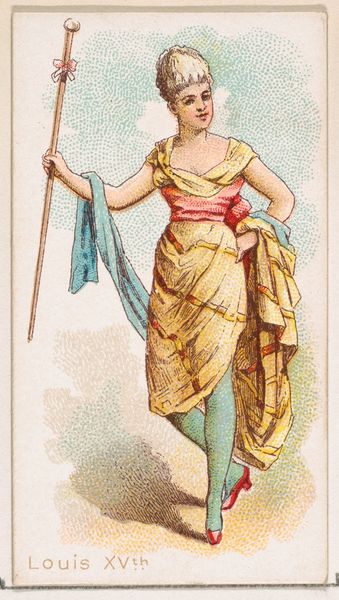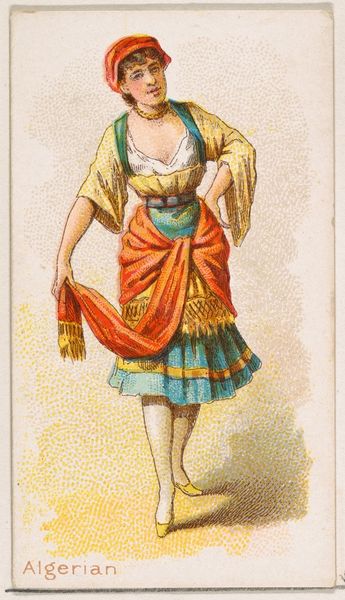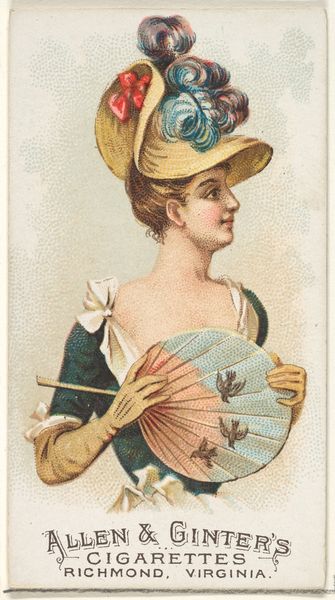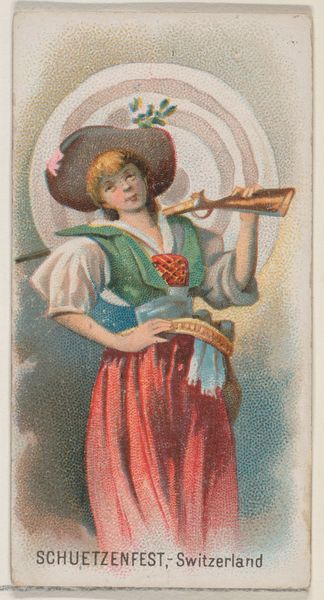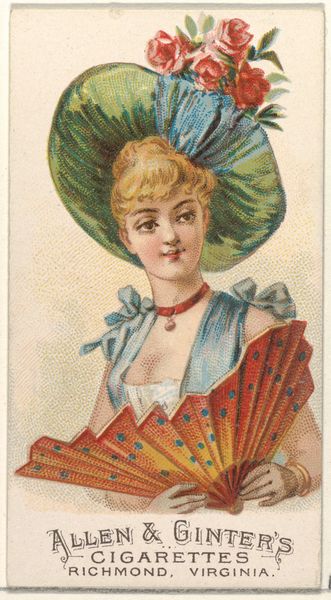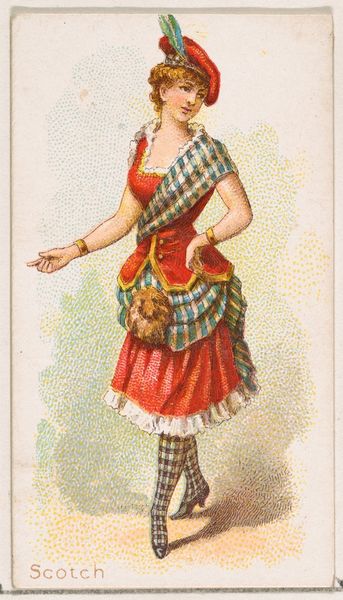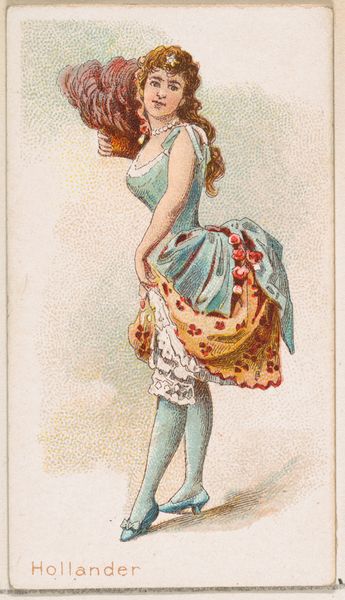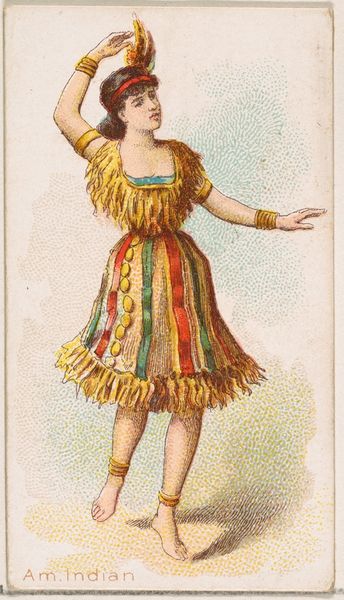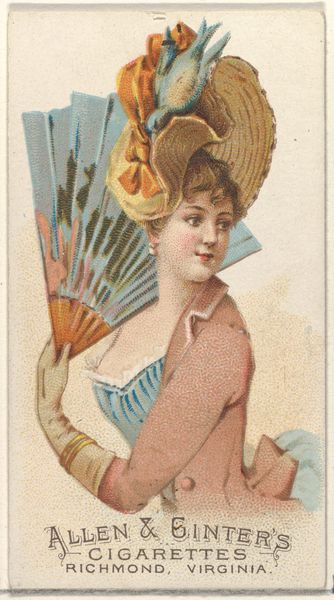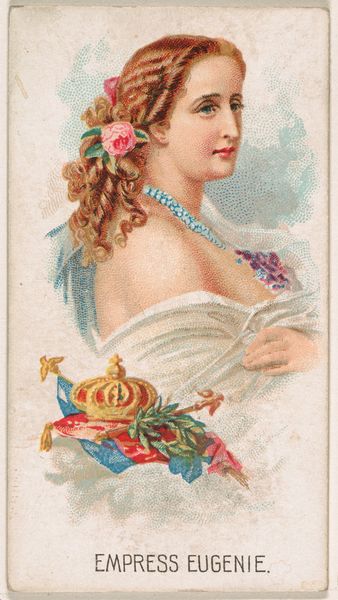
Plate 11, from the Fans of the Period series (N7) for Allen & Ginter Cigarettes Brands 1889
0:00
0:00
lithograph, print
#
portrait
#
lithograph
# print
#
caricature
#
figuration
#
coloured pencil
Dimensions: Sheet: 2 3/4 x 1 1/2 in. (7 x 3.8 cm)
Copyright: Public Domain
Editor: So, here we have Plate 11 from the "Fans of the Period" series by Allen & Ginter, created around 1889. It's a colored-pencil print, quite small actually. There's this woman, presented in what looks like "orientalist" attire, complete with a fan of peacock feathers. There's something about it, like a caricature, and I wonder: What's it really trying to *say*? What do you see in this piece? Curator: Well, this is far more than just a pretty picture advertising cigarettes. Think about the late 19th century – the height of European imperialism, anxieties about race and gender were peaking. These cards, on the surface, seem like innocent depictions of 'exotic' women and yet, they're participating in the construction of the "Other." How do you see this woman being presented to the viewer, and who would be the presumed consumer? Editor: I see what you mean. She's posed in a way that feels almost staged, and is being consumed for commercial purpose.. So this "orientalism" we're seeing is less about understanding another culture and more about creating a desirable image, which would sell the product. Curator: Precisely! The peacock feathers are loaded with symbolism – luxury, extravagance, but also vanity. How do these symbols function within a power structure? Who had access to this imagery? What did it mean for a white, male consumer to see a Turkish woman in this manner? Editor: So, it reinforces a hierarchy, with the white, male consumer at the top, experiencing a safe, controlled encounter with the 'exotic' through this card. It’s almost a claiming or "owning" of other cultures. Curator: Exactly! And these objects circulate those ideas. This isn't just art; it's a potent carrier of cultural attitudes. Consider how marketing today still uses similar strategies of representation to appeal to desires and anxieties. It's a visual strategy. Editor: That makes it much clearer for me: to understand what seem to be simple cards of 'exotic' people requires the analysis of colonial and capitalist systems of power and privilege. Wow! Curator: Yes. Now, we must critically examine not just the object but the social environment of its creation, production and distribution. Let’s think of this artwork as a historical and cultural document to examine the impact of capitalism and colonial perspectives, instead of simply being decorative or quaint, as it could seem.
Comments
No comments
Be the first to comment and join the conversation on the ultimate creative platform.
